These historical photographs finally provide a look at landmark events you didn't know were even photographed like this in the first place.

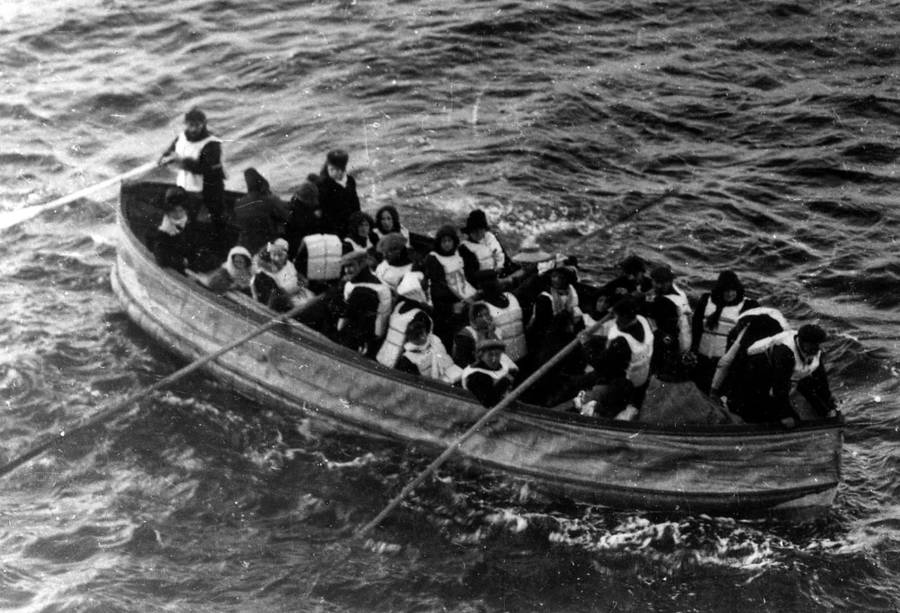
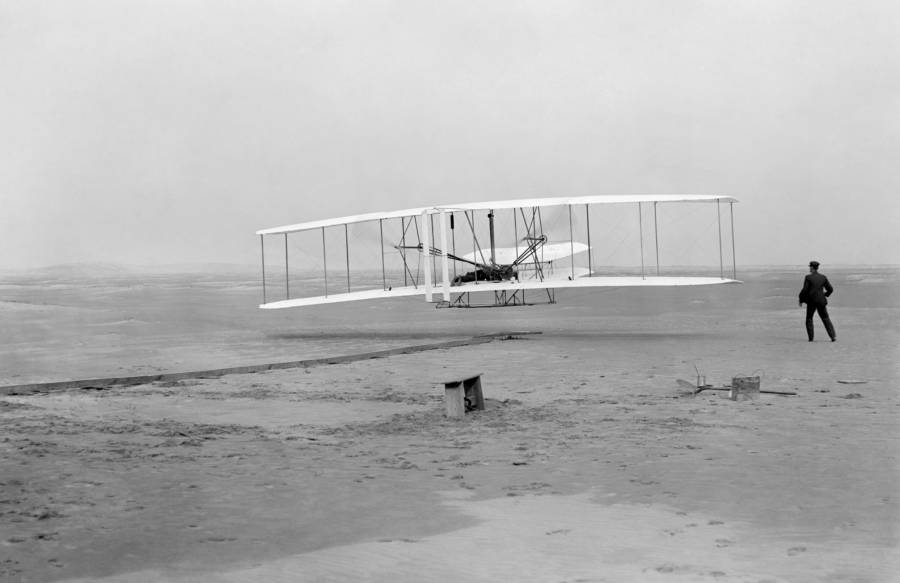
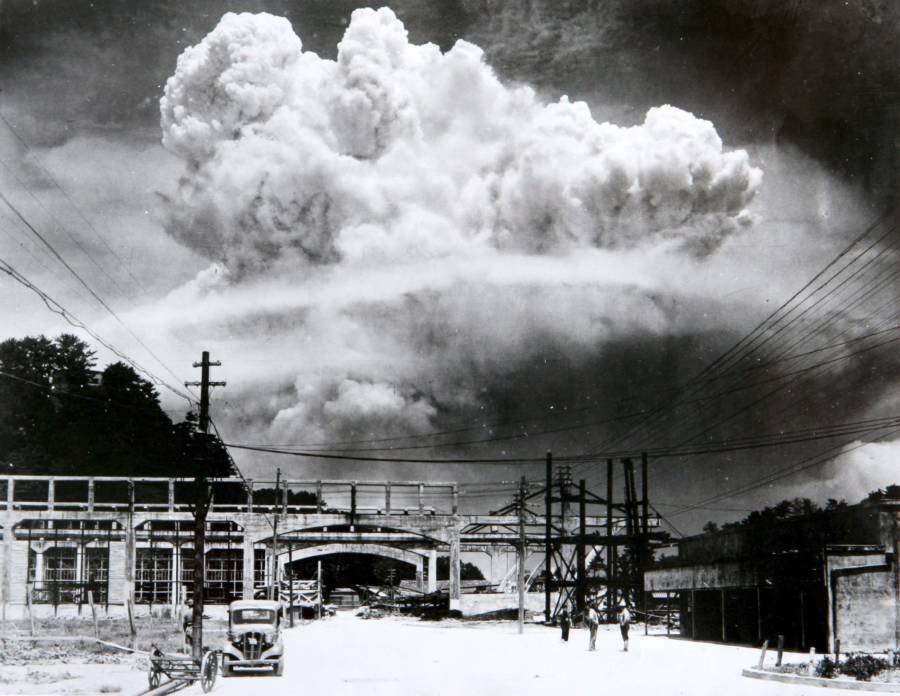
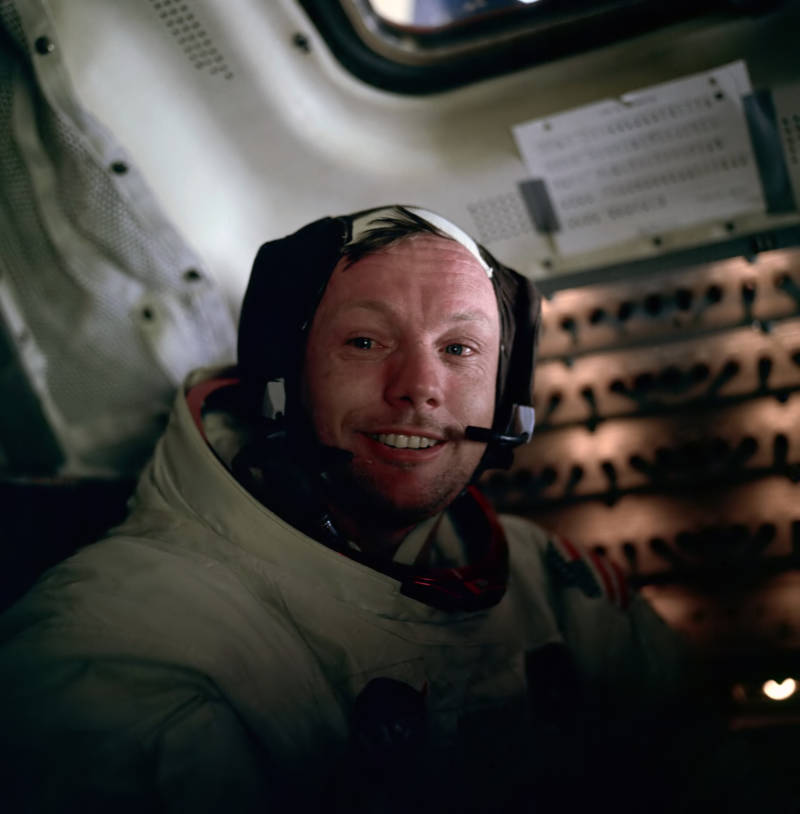
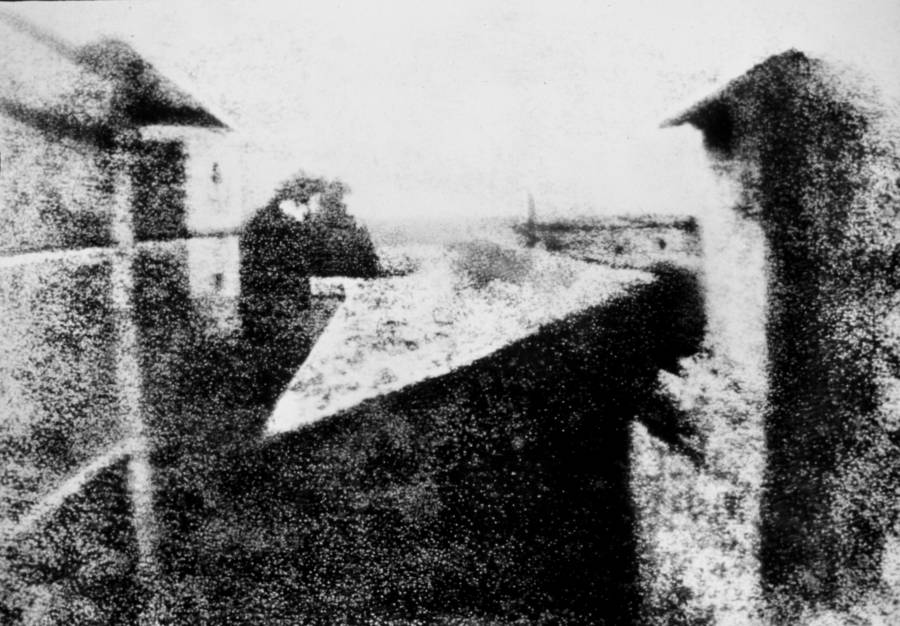

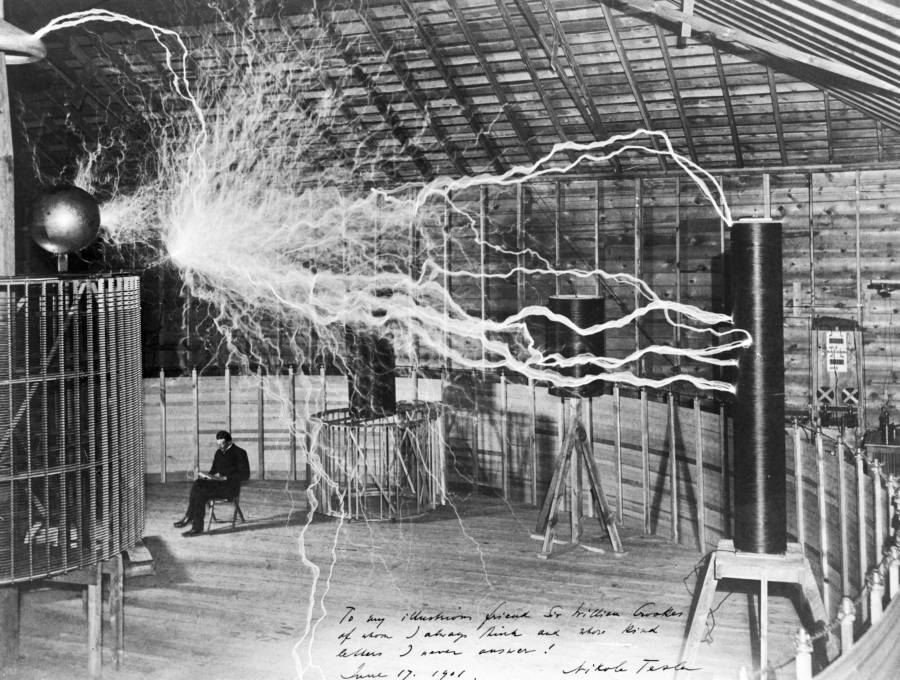

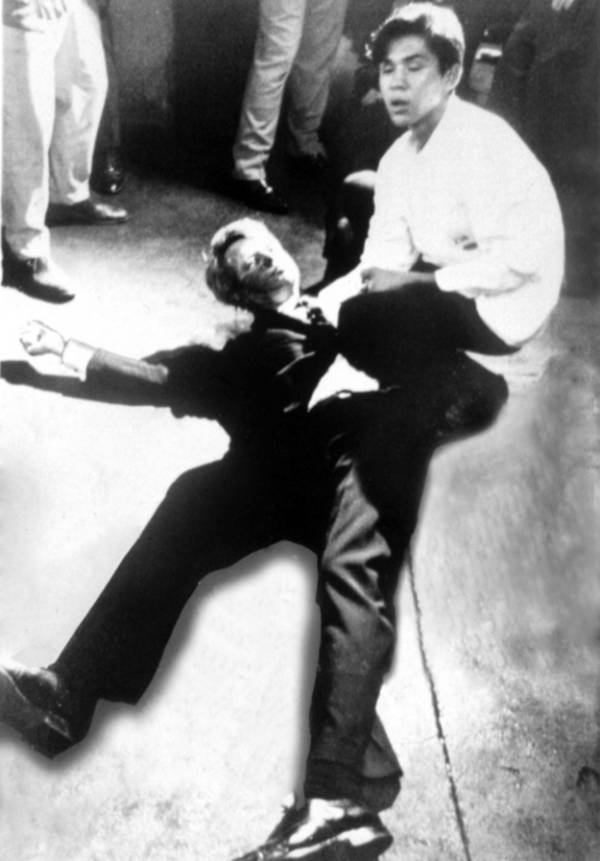
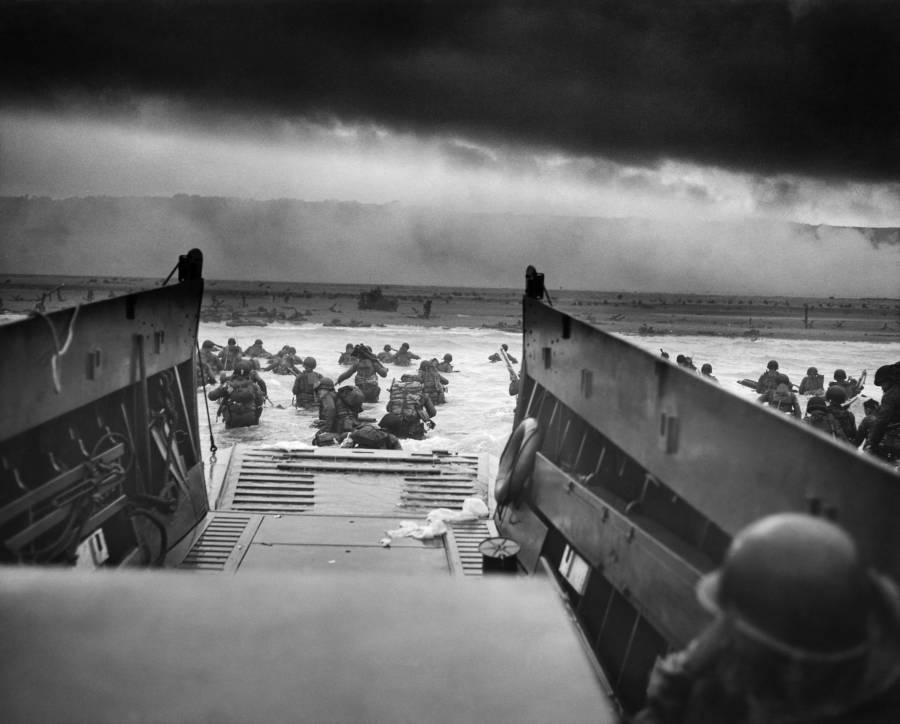
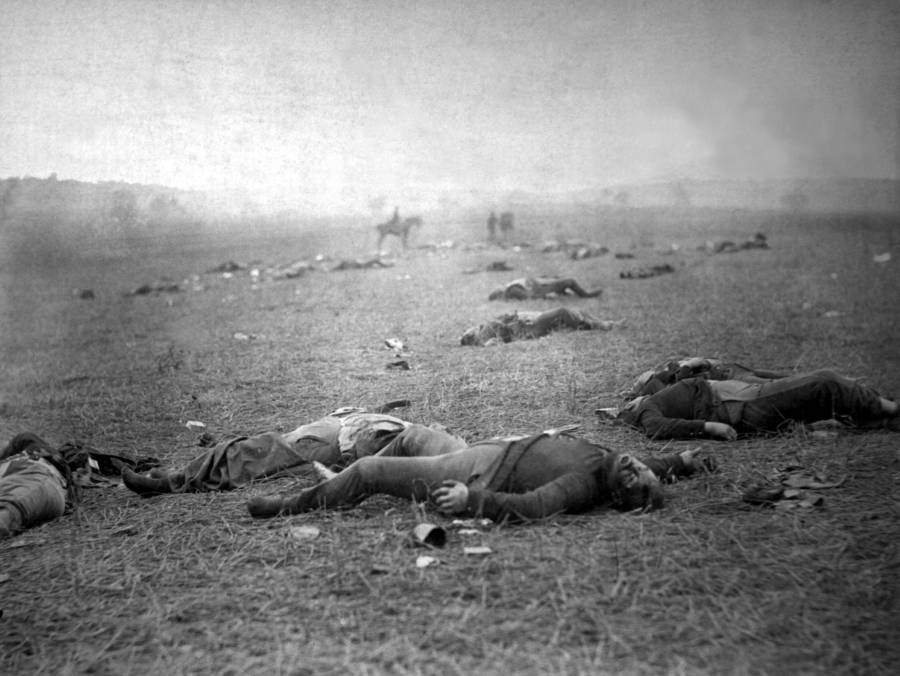
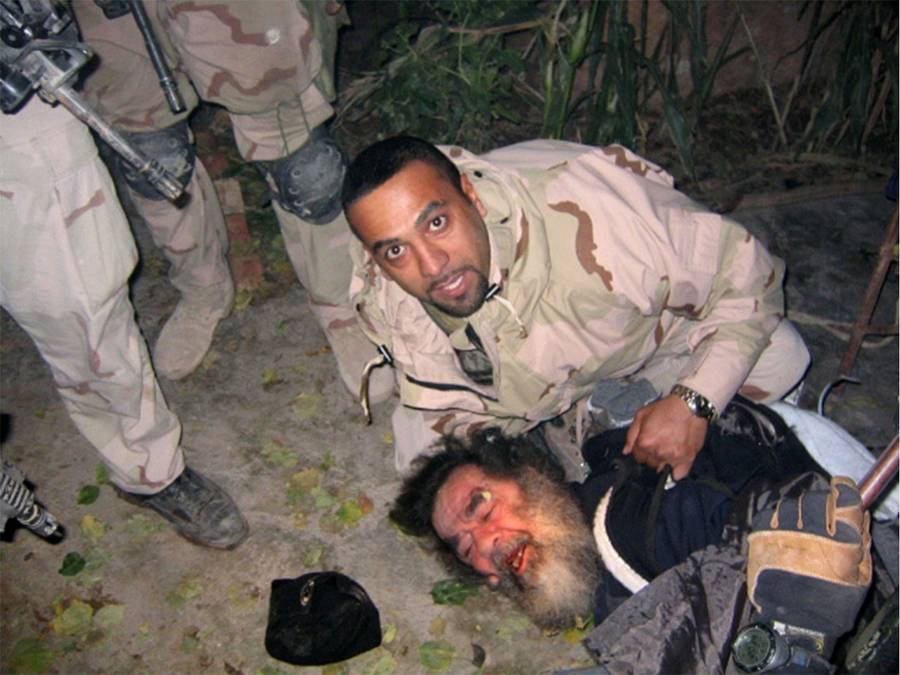

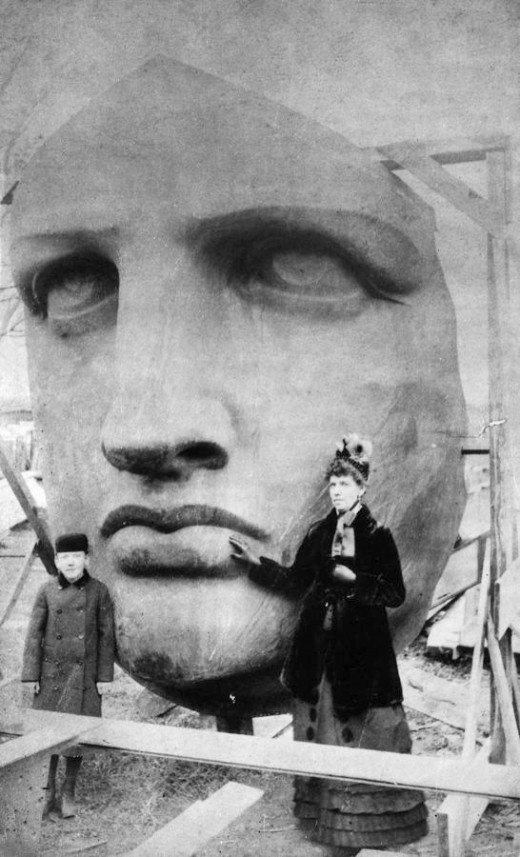
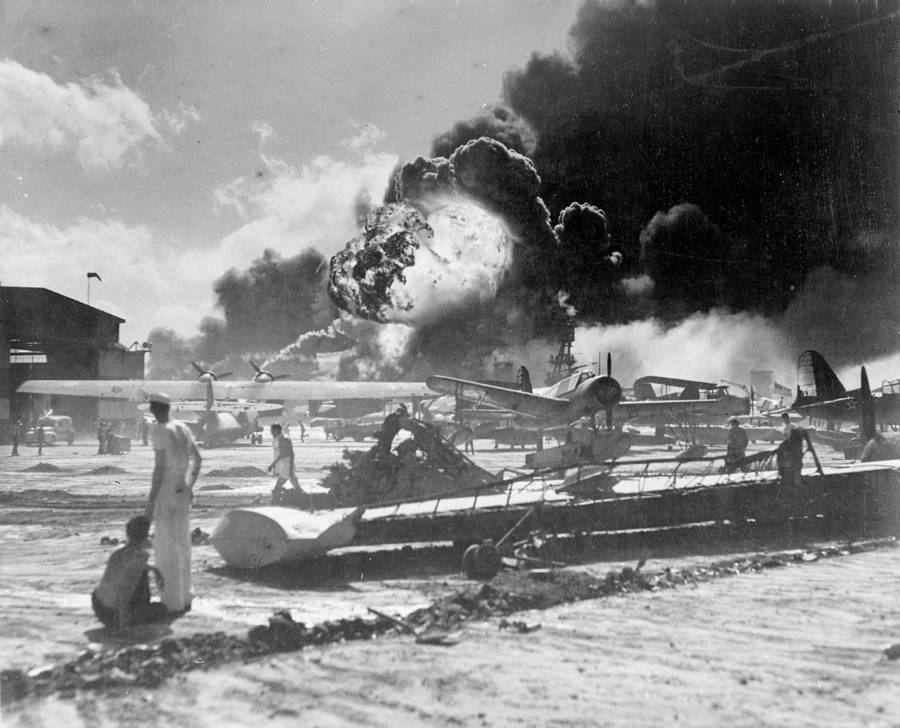
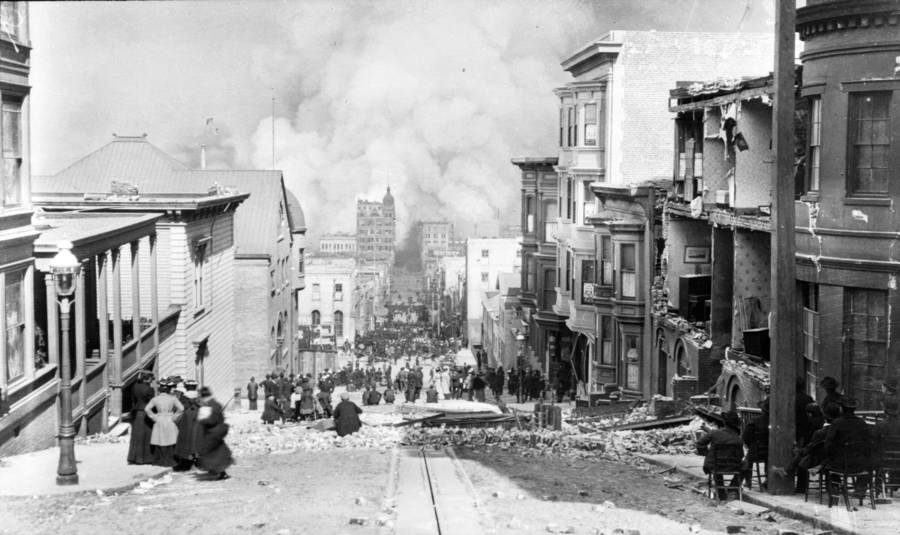


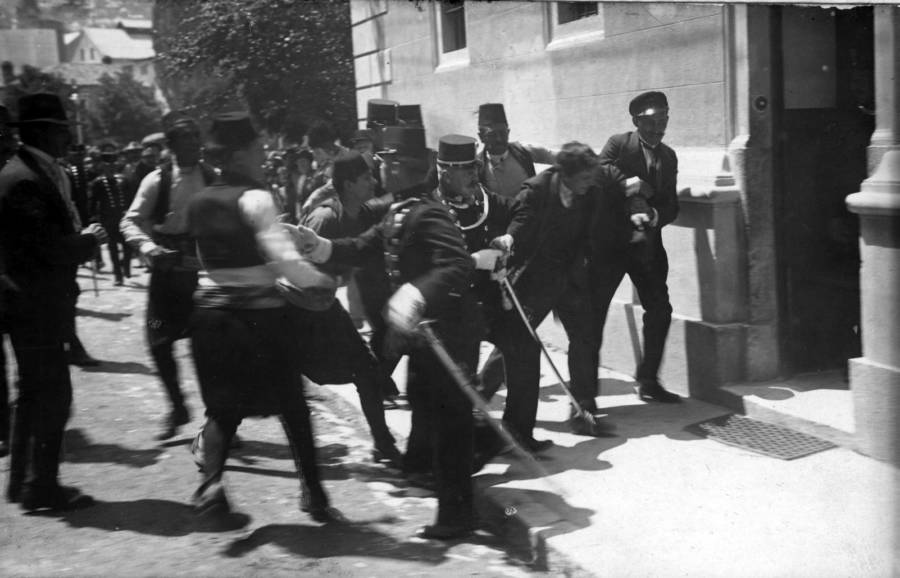

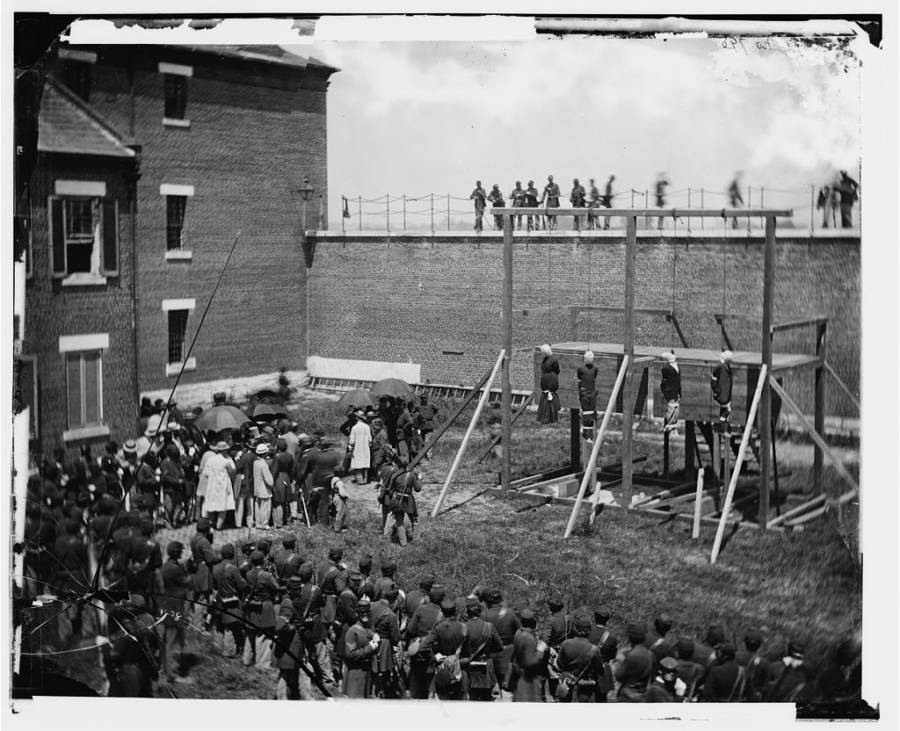




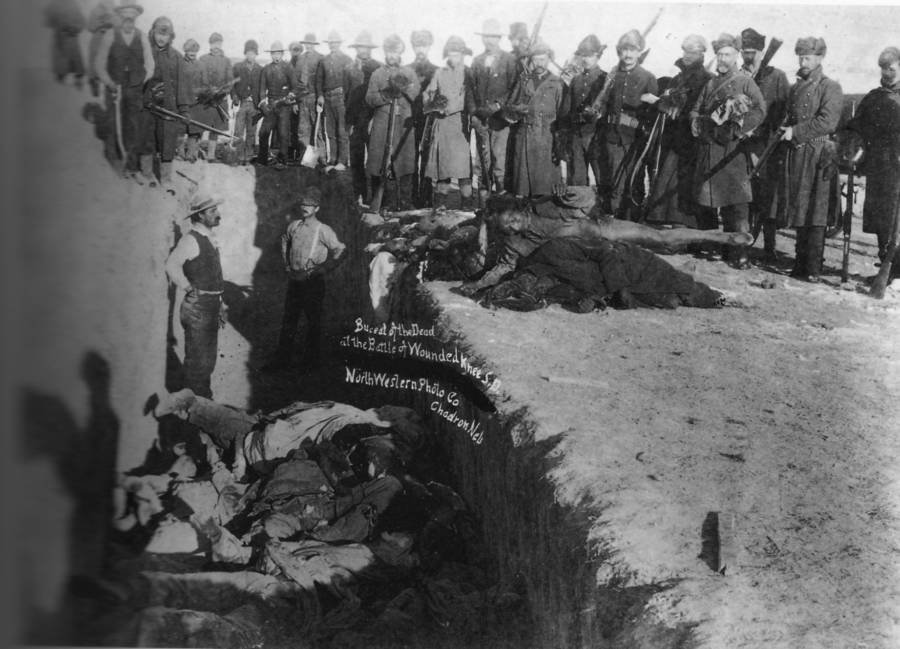
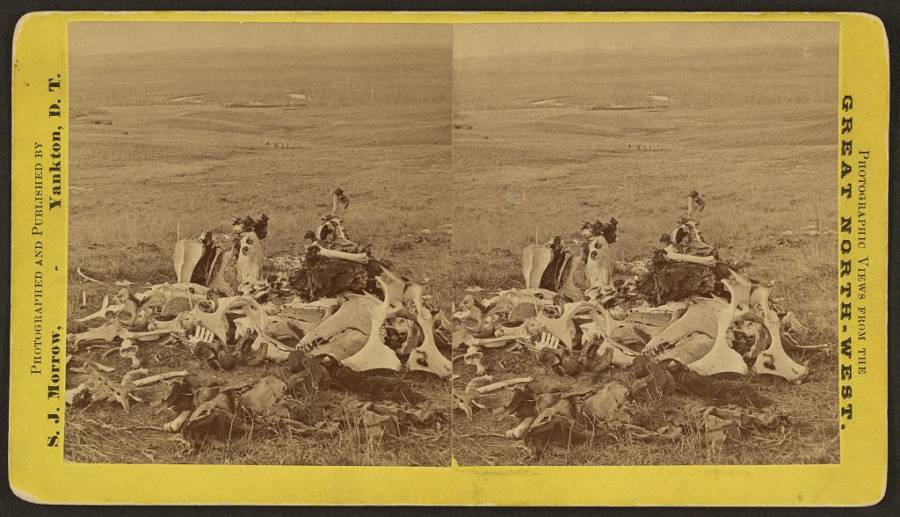

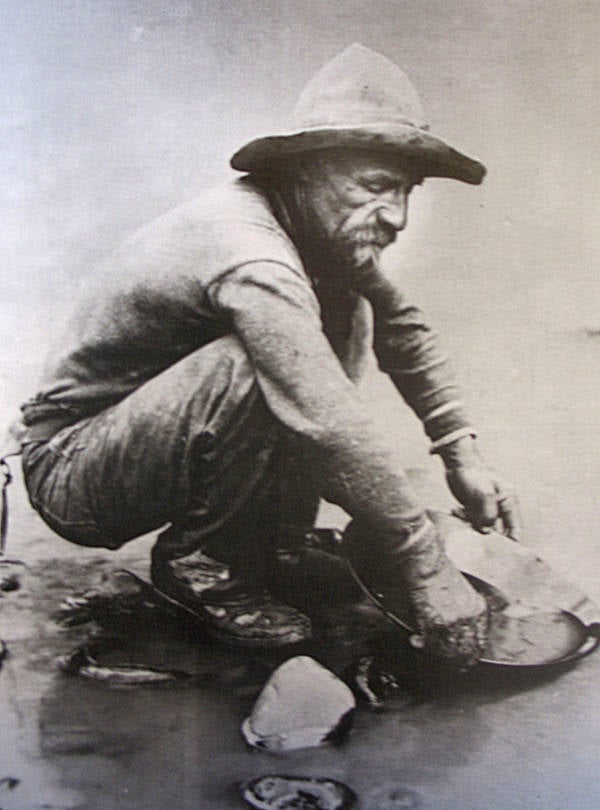

And if you liked this post, be sure to check out these popular posts:
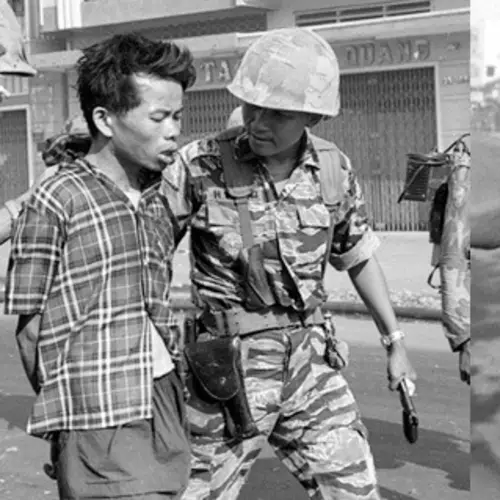

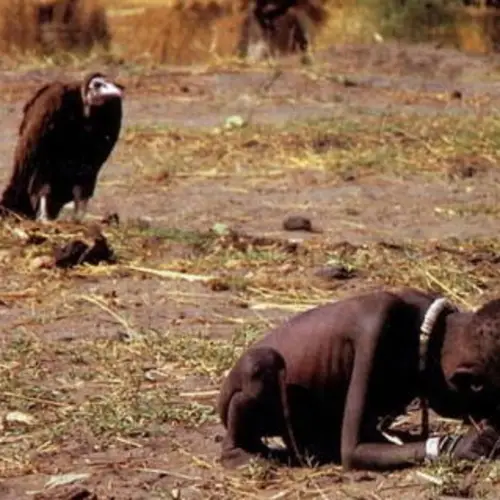
The Gettysburg Address
The Last Lifeboat Off The Titanic
The First Flight
The Bomb, From The Ground
While this perspective makes for a powerful image, it obviously doesn't capture the blasts' terrifying scope to those on the ground at the time. This is what makes this photo of the atomic cloud rising over Nagasaki on August 9, 1945 so devastating. The blast pictured here would soon kill at least 75,000 people.Hiromichi Matsuda/Wikimedia Commons
Neil Armstrong Just After The Moon Landing
Here, we see a lesser known photo worth popularizing: Armstrong back in the module just after making history, the whole story written right there across his face.Edwin E. Aldrin, Jr./NASA/Wikimedia Commons
The First Photograph Ever Taken
Taken in 1826 or 1827 by French photography pioneer Joseph Nicéphore Niépce, this image used a unique process known as heliography. First, Niépce set his camera to an eight-hour exposure over a pewter plate coated with asphalt. He then wiped away the areas of the asphalt not hardened by sunlight to reveal a primitive photograph.Joseph Nicéphore Niépce/Wikimedia Commons
Lincoln On The Battlefield
To see Lincoln out in the real world and towering over his peers is another thing altogether. Pictured: Lincoln stands on the battlefield at Antietam, Maryland with Allan Pinkerton (the famed military intelligence operative who essentially invented the Secret Service, left) and Major General John A. McClernand (right) on October 3, 1862.Alexander Gardner/Library of Congress
Tesla And His Transmitter
Pictured: Tesla sits near his firing transmitter in his Colorado Springs laboratory, 1899.
Dickenson V. Alley/Wellcome Images/Wikimedia Commons
Samurai In Action
Yet the samurai, long after their medieval rise, persisted into the late 19th century, by which time the camera could document them. This photo was taken in 1860, around 15 years before the reformist government abolished this warrior class.Wikimedia Commons
The Assassination Of Robert F. Kennedy
Kneeling beside Kennedy on June 5, 1968 is a waiter named Juan Romero, who happened to be shaking the senator's hand when assassin Sirhan Sirhan fired the fatal bullets.Boris Yaro/Los Angeles Times/Gatehouse Media/Wikimedia
D-Day, Through The Soldiers' Eyes
This photo (entitled "Into the Jaws of Death"), on the other hand, brings the event to life by offering the perspective of Allied soldiers about to storm the beaches and make history.Robert F. Sargent/National Archives and Records Administration
The Battle Of Gettysburg
Fought in and around Gettysburg, Pennsylvania between July 1 and July 3, 1863, the battle saw nearly 8,000 people killed and turned the Civil War in favor of the Union. All totaled, Gettysburg was the costliest battle ever fought in the U.S. Partially titled "A harvest of death," this image begins to reveal that cost.Timothy H. O'Sullivan/Library of Congress
The Capture Of Saddam Hussein
Images of a haggard Hussein post-capture made headlines around the world, but the photos of the actual capture largely didn't. Here, we see just that: Iraqi-native-turned-American-translator known only as Samir holds Hussein to the ground just after U.S. forces discovered him.U.S. Army/Wikimedia Commons
The Eiffel Tower Under Construction
This July 1888 photo reveals a rare glimpse of the tower under construction, 15 months into the process and still nine months away from completion.Wikimedia Commons
Unboxing The Statue Of Liberty
On June 17, 1885, those crates reached the U.S. and the great unboxing began. Pictured: The statue's face not long after removal from its crate.Wikimedia Commons
Pearl Harbor (Like You've Never Seen It Before)
While other images of exploding ships provide a sense of the chaos, this image, with stunned soldiers in the foreground, brings the true scale and anarchy of that destruction into focus.U.S. Navy/National Archives/Wikimedia Commons
The San Francisco Earthquake Of 1906
Yet amid that pandemonium, at least one photographer managed to capture a stark, evocative image that reveals the $10 billion destruction.Arnold Genthe/Library of Congress
Vincent Van Gogh's Actual Portrait
Not only is this just one of two confirmed photographs of the famous painter (and the only one of him post childhood), this photo provides a jarring look at the actual visage of a man we tend only to envision by way of his famous self-portraits.Wikimedia Commons
Lincoln's Funeral
Four days later, on April 19, the nation mourned as funeral marchers made their way down Pennsylvania Ave. in Washington, D.C. Library of Congress
The Shot That Started World War I
Here, we can see police arrest the man who "started it all" just after the assassination. (Some scholars say that this photo actually depicts the arrest of an immediate bystander initially mistaken for Princip.) Wikimedia Commons
Hitler Declares War On The U.S.
Indeed, with bold colors and an enormous Reichsadler, it was a scene of spectacle when Hitler addressed the Reichstag at the Kroll Opera House in Berlin on December 11, 1941 to declare war on the U.S.German Federal Archives/Wikimedia Commons
Hanging Of The Lincoln Assassination Conspirators
Unlike Booth, they failed to follow through. Like Booth, they were eventually captured and killed. On July 7, 1865, four of the plotters — Mary E. Surratt, Lewis T. Powell, David E. Herold, and George A. Atzerodt — died at the end of a rope in Washington, D.C.Alexander Gardner/Library of Congress
Billy The Kid, In Person With His Posse
The 1878 photo here, however, presents Billy the Kid (left) in relative clarity, playing croquet with his posse, the Regulators, in New Mexico.Wikimedia Commons
The Surrender That Ended The Civil War
Pictured: Soldiers wait outside the court house in Appomattox as the higher-ups work out the official terms of surrender. Timothy H. O'Sullivan/Library of Congress
The Armenian Genocide
Of the images that have survived, many portray Armenians being rounded up for execution. Fewer show the brutal reality of those executions. Pictured: An Armenian woman kneels beside her dead child in Aleppo, Syria, circa 1915-1919. American Committee for Relief in the Near East/Wikimedia Commons
Thomas Edison Unveils The Phonograph
In spite of our familiarity with Edison's inventions, it's rare to see the genesis of those inventions themselves. Pictured: Thomas Edison unveils his phonograph in Washington, D.C. on April 18, 1878. Levin C. Handy/Library of Congress
The Wounded Knee Massacre
On December 29, 1890, U.S. troops followed orders to disarm Native Americans they'd forcibly relocated to a camp near Wounded Knee Creek, South Dakota. Accounts vary, but most say a scuffle started after one Lakota refused to give up his rifle. In the end, more than 400 troops killed as many as 300 Lakota men, women, and children, and wounded another 50. The regiment then buried the Lakota in a mass grave (pictured).Northwestern Photo Co./Library of Congress
The Battle Of Little Bighorn
Pictured: Bones at the site of Custer's Last Stand in the aftermath of the battle.Stanley J. Morrow/Library of Congress
The Klondike Gold Rush
However scarce, these images provide a glimpse into a period when dysentery and malaria were the norm and food was so scarce that salt was worth its weight in gold. Pictured: Miners at work, circa 1899.John McLain/Wikimedia Commons
The California Gold Rush
This mass migration likewise saw about 300,000 settlers head to California in a move that would shape American history far more than you'd think. Indeed, if not for the influx of people, the accompanying development of San Francisco, the Transcontinental Railroad, and the state of California itself might very well look a lot different. Pictured: A prospector pans for gold in the American River of California's Sacramento Valley, circa 1850.L. C. McClure/Wikimedia Commons
Completion Of The Transcontinental Railroad
It's likewise hard to believe that a moment so antiquated was actually captured — with terrific clarity, no less — on film.
Andrew J. Russell/Yale University Libraries/Wikimedia Commons




Today, with a multi-megapixel camera in every pocket and more than 350 million images uploaded to Facebook alone each day, fewer and fewer events escape visual capture and thus a certain immortality.
Thus it's now easy to forget that the photograph, first invented in 1826 or 1827, has only existed for the most recent three percent of recorded history, and only been in regular use for an even smaller fraction of that time.
Still, there are plenty of post-1826 historical events that many of us probably don't realize were actually photographed.
These are the landmark events that either happened so long ago, so unexpectedly, or amid such chaos that you'd never think someone was on hand with a camera to capture the moment -- and often in remarkably stunning detail and quality.
Then there are the special few events whose photographs are indeed widely known, yet perhaps the most important images are the ones that are, for some reason, relatively lesser known.
Either way, the rare historical photos above provide a chance to put an image to the pivotal moments you know well but probably haven't actually seen. From the Gettysburg Address to the rescue of the Titanic to the capture of Saddam Hussein, you know these events. Now see them brought to life.
Fascinated by these rare historical photos? Next, immerse yourself in 50 influential photographs that changed our world. Then, check out famous historical images that were actually photoshopped.





